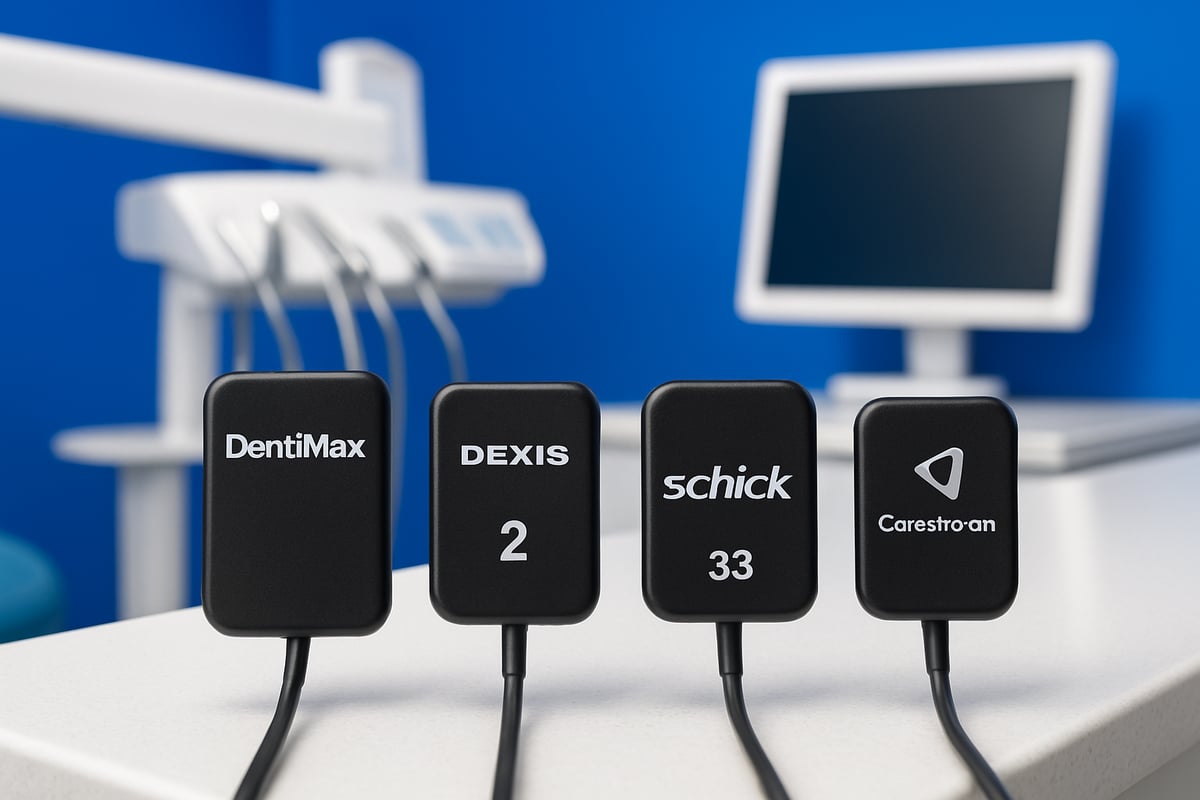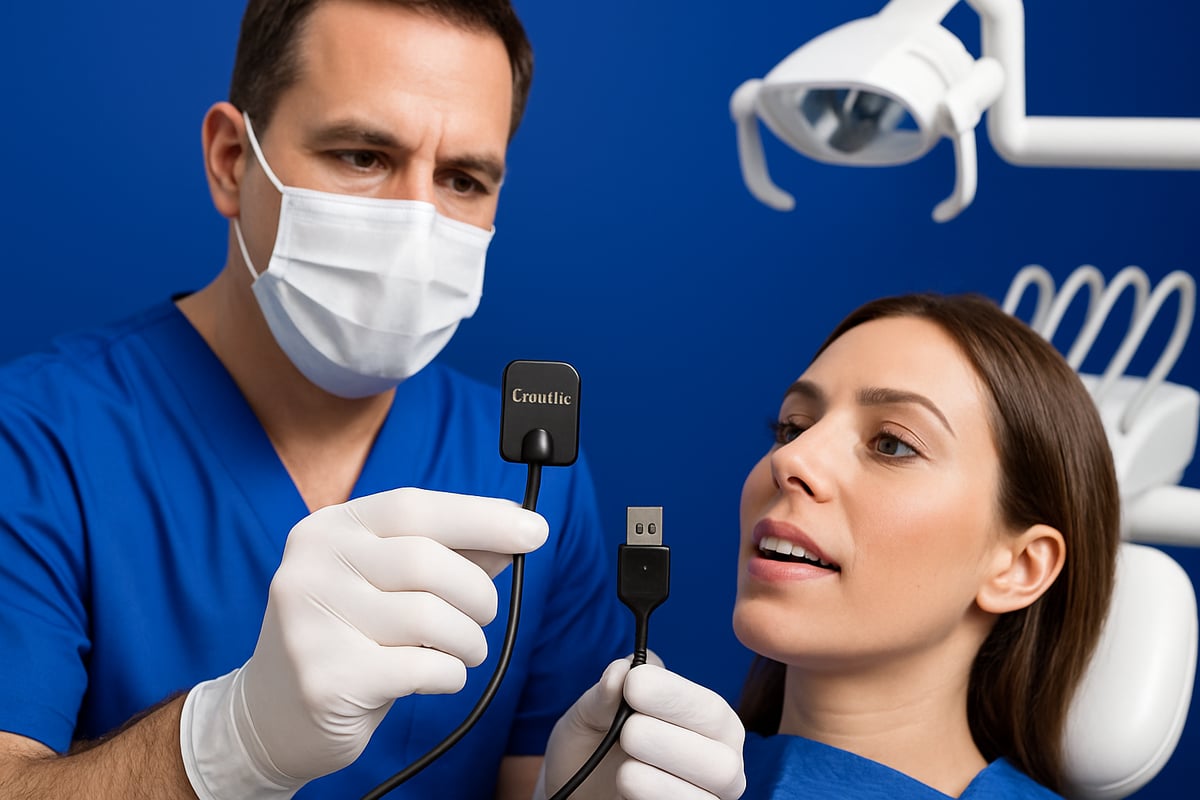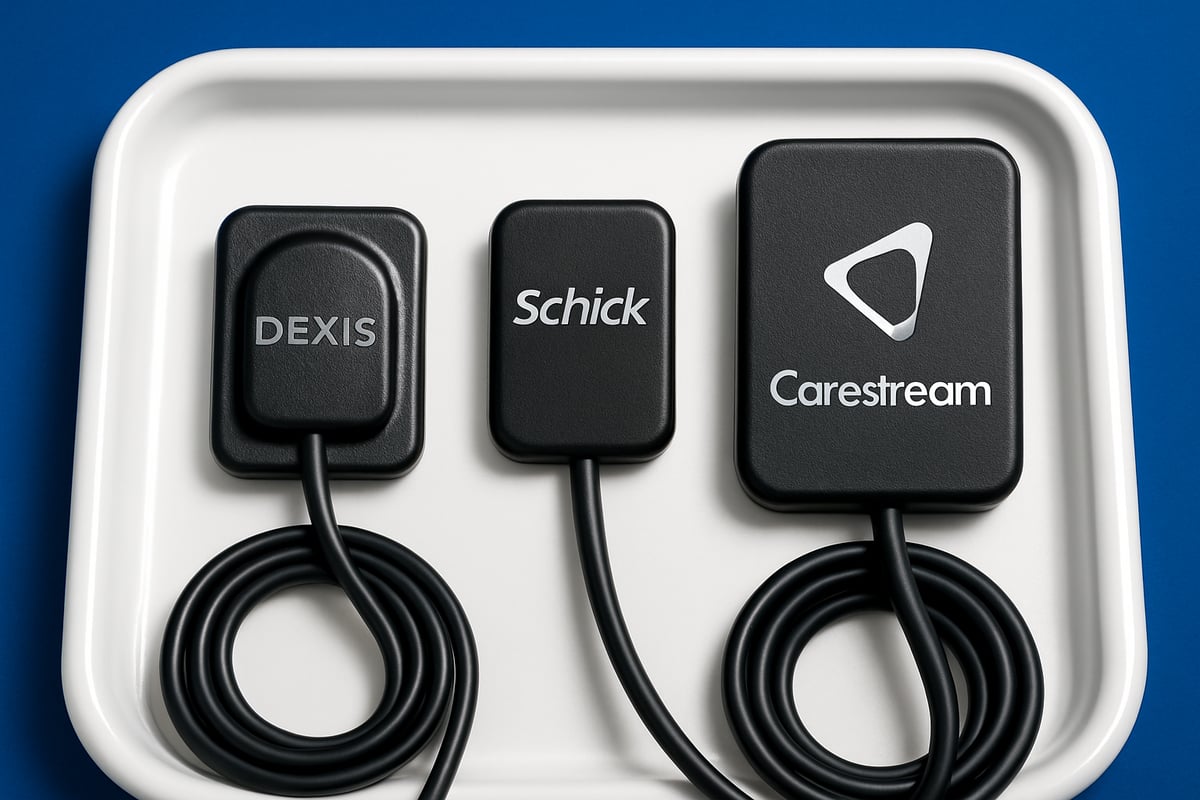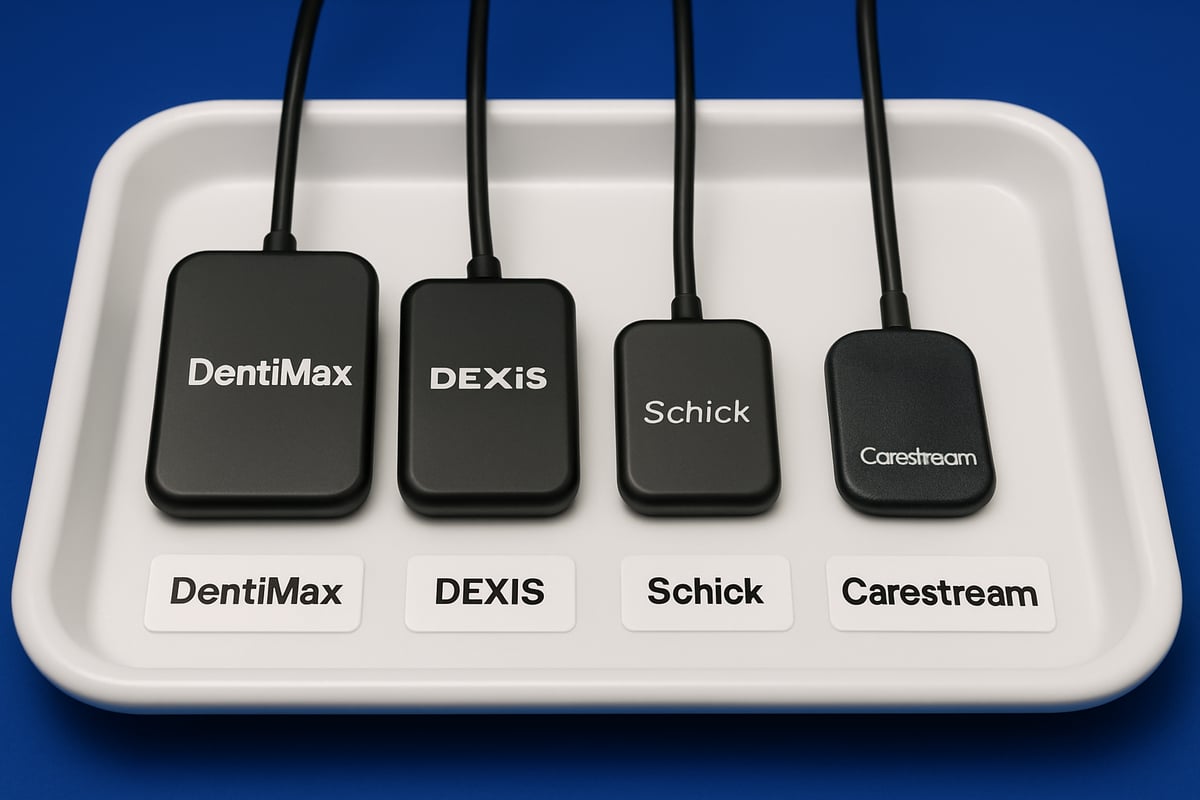Choosing the right dental X-ray sensor is crucial for your practice’s success in 2025. The dentimax sensor stands out among options, but how does it truly compare to other leading brands? This guide delivers an unbiased, detailed comparison, breaking down pricing, image quality, durability, warranty, and support. Discover both the strengths and drawbacks of each sensor, so you can confidently make the best investment for your dental practice.
Overview of Dental X-Ray Sensors in 2025
Dental X-ray sensors are at the core of modern dental diagnostics, providing crisp digital images that help dentists diagnose with confidence. In 2025, these sensors have evolved further, with advances in imaging technology and artificial intelligence. The two primary sensor types are CMOS and CCD, each offering unique benefits in terms of speed, sensitivity, and durability. This year, improvements in sensor design and AI-powered image analysis are pushing the boundaries of what dentists can see, making tools like the dentimax sensor more critical than ever. For a deeper dive into the latest trends and technology shaping the market, check out Dental Digital X-Ray Sensor Market Trends.

What Are Dental X-Ray Sensors?
Dental X-ray sensors are compact digital devices that capture detailed radiographic images of teeth and surrounding tissues. Their role is to replace traditional film, offering instant results and reduced radiation exposure. In 2025, CMOS sensors dominate due to their efficiency and high image quality, while CCD sensors remain in some high-end applications. Technological advancements, such as improved active imaging areas and AI integration, enable even greater diagnostic precision. The dentimax sensor exemplifies these improvements, delivering faster image capture and better resolution that aligns with evolving clinical needs.
Major Players in the Market
The dental sensor market is led by established brands like DentiMax, Dexis™, Schick®, and Carestream®. Each of these companies has a strong track record, with years of innovation and trusted products. DentiMax has built its reputation on user-friendly design and competitive pricing. Dexis™ is known for premium image quality and integration, while Schick® stands out for cable replaceability. Carestream® offers some of the largest imaging areas. The dentimax sensor continues to gain traction by focusing on flexibility and value, making it a strong contender among these leaders.
Why Sensor Choice Matters
Choosing the right dental X-ray sensor can have a significant impact on your practice. Image quality directly affects diagnostic accuracy, allowing for early detection of dental issues. Workflow efficiency improves when sensors are reliable and easy to use. Patient comfort is also enhanced by thinner, ergonomically designed sensors. Cost is another crucial factor, as the price of the dentimax sensor and its competitors can influence long-term profitability. Making the right choice ensures your practice delivers excellent care while maintaining operational efficiency.
Key Decision Criteria for Practices
When evaluating dental X-ray sensors, several key criteria should guide your decision. Price, image quality, durability, warranty, and support are essential factors to weigh. Integration with your existing practice management or imaging software is also critical for seamless workflow. The dentimax sensor is often praised for its compatibility and robust support options. To make the best investment, seek unbiased comparisons and consider real-world feedback from other dental professionals. This approach will help you select the sensor that meets your unique practice needs.
DentiMax Sensor: Features and Benefits
Selecting the right dental X-ray sensor is crucial for any modern dental practice. The dentimax sensor line stands out in 2025, delivering a blend of advanced technology, user-centric design, and value-focused pricing. Let’s explore what makes these sensors a top contender for dental professionals seeking to elevate diagnostic capabilities and patient care.

Product Line Overview
The dentimax sensor family features three primary models: Pro, Dream, and Open. Each serves distinct practice needs. The Pro model targets high-volume clinics that demand robust performance, while the Dream boasts an ultra-thin profile for optimal patient comfort. The Open Sensor is the most affordable, ideal for startups or as a backup solution.
All models are available in Size 1.5 and Size 2, ensuring compatibility with a wide range of patients and procedures. Notably, DentiMax has prioritized seamless integration with leading dental imaging and charting platforms. For those evaluating software compatibility, Dental software reviews and comparisons can help you assess how the dentimax sensor fits into your workflow.
Image Quality and Diagnostic Performance
A major strength of the dentimax sensor is its impressive imaging capability. The Dream Sensor offers an active imaging area of up to 900 mm², capturing high-resolution X-rays that reveal subtle details essential for accurate diagnosis. Sample images consistently show sharp contrast and minimal noise, making caries and root structures easy to identify.
Clinicians report that the dentimax sensor delivers reliable clarity across a range of clinical applications. Published reviews highlight its ability to produce diagnostic images that rival or surpass those from higher-priced competitors. Consistent image quality supports confident treatment planning and better patient outcomes.
Build, Comfort, and Durability
The dentimax sensor is engineered for both resilience and comfort. The Pro model has a thickness of 8.3mm, while the Dream and Open are just 5.3mm and 5.0mm respectively. This slim profile reduces patient discomfort, especially during posterior imaging.
Durability is a key differentiator. The cable is designed for repairability, which can significantly reduce downtime and replacement costs. DentiMax also offers an accidental replacement plan, providing peace of mind for busy practices. Materials are chosen for strength and smoothness, ensuring the sensor feels comfortable for patients of all ages.
Pricing, Warranty, and Support
Affordability and protection are central to the dentimax sensor value proposition. The Pro model is priced at $7,999, the Dream at $6,999, and the Open at $2,999, making them highly competitive in 2025’s market.
Each dentimax sensor comes with a 3-year manufacturer warranty and optional accidental protection plans. Practices receive a full year of free support, after which ongoing support is available for $99 per month. This covers technical assistance, software updates, and expedited troubleshooting, helping practices maximize their investment and minimize disruptions.
Competitor Sensors: Dexis™, Schick®, and Carestream®
Choosing the right dental X-ray sensor isn’t just about the dentimax sensor. Leading competitors like Dexis™, Schick®, and Carestream® each bring their own strengths to the market, making the decision more complex for dental practices in 2025.

Dexis™ Sensor
Dexis™ sensors are renowned for their reliability and premium positioning. For 2025, the main Dexis™ offering is the Size 1.5 sensor, retailing at $10,999. This price is notably higher than the dentimax sensor, reflecting Dexis™’s emphasis on advanced imaging and established brand reputation.
Practices benefit from a 1-year manufacturer warranty, with optional DexCare support at $1,295 per year after. Dexis™ sensors feature a sizable active imaging area and are praised for image clarity. However, the lack of an accidental replacement plan and higher overall cost can be drawbacks when compared to the dentimax sensor.
Schick® Sensor
Schick® sensors have long served dental practices prioritizing flexibility and ease of use. Their Size 2 model is priced at $7,995, which closely matches the upper-tier dentimax sensor price range, making them a frequent point of comparison.
The standard warranty covers two years, with an optional third year via a service club. Schick® stands out by including one free cable replacement, with additional replacements costing $800. Clinical feedback often highlights the Schick® sensor’s consistent performance, though cable replacement costs and support fees remain considerations versus a dentimax sensor.
Carestream® Sensor
Carestream® sensors are popular for their blend of affordability and technology. The Size 2 sensor comes in at $5,999, undercutting both Dexis™ and some dentimax sensor models. Notably, Carestream® offers a three-year warranty, with a five-year extension available for $999.
One of Carestream®’s biggest draws is its large 930 mm² active imaging area, covering roughly 66% of the sensor. Practices interested in seamless software integration should review Carestream software features to assess compatibility. Their replacement and support policies are competitive, but accidental replacement is not included like with the dentimax sensor.
Comparative Table: Key Specs and Features
Comparing the dentimax sensor to its top competitors highlights the diversity in features and support.
| Sensor | Price | Thickness | Warranty | Accidental Plan | Cable Repair | Imaging Area | Support Cost |
|---|---|---|---|---|---|---|---|
| DentiMax Pro | $7,999 | 8.3mm | 3 years | Yes | Repairable ($999) | 900 mm² | $99/mo (after 1y) |
| Dexis™ 1.5 | $10,999 | N/A | 1 year | No | Not repairable | N/A | $107.91/mo |
| Schick® 2 | $7,995 | 7.5mm | 2 years | No | Replaceable ($800) | 910 mm² | $115/mo |
| Carestream® 2 | $5,999 | 8.2mm | 3 years | No | Not repairable | 930 mm² | $49.99/mo |
This table makes it easy to see how the dentimax sensor stacks up on price, warranty, and ongoing costs.
Real-World X-Ray Image Comparisons
When it comes to diagnostic image quality, dental professionals often compare sample images from each brand. The dentimax sensor consistently receives praise for its sharpness and contrast, making it a favorite among clinicians for caries and bone level detection.
Dexis™ sensors are valued for their fine detail, while Schick® sensors are noted for reliable grayscale reproduction. Carestream® stands out with a broader imaging area, though some users note minor edge softness. Ultimately, many practices choose a dentimax sensor for its balanced image clarity, active imaging size, and cost-effectiveness.
In-Depth Comparison: DentiMax vs. Competitors
Choosing a dental X-ray sensor in 2025 means weighing more than just upfront costs. Dental practices expect high performance, reliability, and support from their investment. This in-depth guide compares the dentimax sensor with other leading brands, helping you find the best fit for your needs.

Price and Value Analysis
Price is often the first consideration when evaluating a dentimax sensor or any competitor. Here’s how the major players stack up:
| Sensor | Retail Price | What’s Included |
|---|---|---|
| DentiMax Pro | $7,999 | Sensor, 3-yr warranty, accidental protection |
| DentiMax Dream | $6,999 | Sensor, 3-yr warranty, accidental protection |
| DentiMax Open | $2,999 | Sensor, 3-yr warranty, accidental protection |
| Dexis™ | $10,999 | Sensor, 1-yr warranty |
| Schick® | $7,995 | Sensor, 2-yr warranty, 1 cable replacement |
| Carestream® | $5,999 | Sensor, 3-yr warranty |
The dentimax sensor stands out for value, especially with accidental protection included and a repairable cable option. Competitors like Dexis™ cost more upfront and offer less coverage. Practices should also consider long-term value, since support, accidental plans, and sensor durability all impact total cost of ownership.
When reviewing sensor investments, it’s smart to look at Dental Digital X-Ray Market Report 2025 for market pricing trends and emerging brands.
Warranty, Support, and Replacement Policies
Warranty terms and ongoing support can make or break the value of your dentimax sensor purchase. DentiMax provides a robust 3-year manufacturer warranty on all models, including accidental protection. This is a unique advantage over Dexis™, which only offers a 1-year warranty, and Schick®, which provides 2 years (with an optional third year via their service club).
Support plans are another cost to consider. DentiMax includes one year of free support, then offers ongoing help for $99 per month. Dexis™ charges roughly $108 per month after year one, while Schick® asks for $115 monthly, and Carestream® is the most affordable at $49.99.
Replacement policies also differ. DentiMax sensors are replaced with new units under warranty, while some competitors provide refurbished replacements. For cable repairs, DentiMax charges $999 for out-of-warranty issues, while Schick® includes one cable swap and charges $800 for extras. Dexis™ and Carestream® do not offer cable repairs.
Sensor Design, Comfort, and Durability
Physical design directly impacts both patient comfort and sensor lifespan. The dentimax sensor Dream model is just 5.3mm thick, and the Open model is even thinner at 5.0mm. These dimensions make them among the slimmest options available, which patients appreciate during intraoral imaging.
Materials used in the dentimax sensor prioritize comfort, with rounded edges and smooth surfaces. Durability is enhanced by robust construction and a repairable cable design. Schick® also allows cable replacement, while Dexis™ and Carestream® do not offer this feature.
Practices benefit from the accidental replacement plan that comes standard with the dentimax sensor, reducing downtime and headaches from accidental drops or bites.
Image Quality and Active Imaging Area
Image clarity and the usable imaging area are critical for diagnostic accuracy. The dentimax sensor Dream model provides an active imaging area of 900 mm², while Carestream® leads the pack with 930 mm². Schick® offers 910 mm², and Dexis™ aligns closely with the DentiMax Pro at 880 mm².
Percentage-wise, the dentimax sensor Pro and Dexis™ utilize about 74% of the sensor for imaging, while Dream and Schick® reach 68%. Carestream® uses 66% of its surface. These differences can impact the amount of anatomy captured in a single exposure.
Clinical reviews consistently praise the dentimax sensor for sharp contrast and reliable image quality, making it a strong choice for practices prioritizing diagnostics.
Practice Workflow and Integration Considerations
For seamless operations, integration with practice management and imaging software is a must. The dentimax sensor is known for broad compatibility, supporting direct integration with many dental software platforms.
Setup is straightforward, and staff training requirements are minimal due to the intuitive design. Practices switching from other brands often note smoother workflows with the dentimax sensor, especially for high-volume clinics.
Fast image acquisition and reliable performance help maintain patient throughput, reducing bottlenecks during busy days. Software updates and support further enhance long-term integration.
User Feedback and Third-Party Evaluations
Real-world feedback offers invaluable insight. Publications like Dental Product Shopper and Clinician’s Report highlight the dentimax sensor’s balance of price, performance, and support. Users praise the accidental protection plan and the comfort of the thin sensor profile.
Case studies emphasize reliability, with many practices reporting years of trouble-free use. Commonly mentioned strengths include image clarity, responsive support, and the peace of mind that comes with the warranty.
Some users note that cable repairs, while not free, are a welcome alternative to full sensor replacement. Overall, the dentimax sensor stands out as a top performer in 2025’s competitive digital X-ray landscape.
Choosing the Right Sensor for Your Practice in 2025
Selecting the best digital X-ray sensor can shape your dental practice’s efficiency and quality of care for years to come. The decision goes beyond just the initial price tag, especially with options like the dentimax sensor and its competitors evolving rapidly in 2025.
Assessing Your Practice’s Unique Needs
Every dental practice is unique, so your X-ray sensor choice should reflect your specific environment. Consider how many patients you see daily and the types of procedures you perform.
If you run a high-volume clinic or offer specialized treatments, reliability and speed from your dentimax sensor become crucial. Solo practitioners may prioritize affordability and straightforward support. Think about your budget, not only for the initial purchase but also for ongoing costs like support and accidental coverage.
Finally, weigh the level of warranty you’ll need. Practices new to digital imaging may want extra support, while tech-savvy teams might focus on seamless integration.
Key Factors to Prioritize
Balancing features is key when comparing the dentimax sensor to other brands. Look at the following:
- Price versus included features
- Image quality and diagnostic clarity
- Durability and repairability
- Warranty length and accidental protection
- Support responsiveness
- Integration with your existing software
Compatibility is especially important. The dentimax sensor stands out for easy integration, but always check how well any sensor works with your current dental charting programs. Consider how quickly staff can adapt to new tools, and whether the vendor offers training or resources to help.
Common Pitfalls and Mistakes to Avoid
It’s easy to focus on upfront cost, but the total cost of ownership is what really matters. Don’t overlook support fees, cable repair costs, or what’s actually covered by the warranty.
Read the fine print before buying a dentimax sensor or any competitor. Some warranties exclude accidental damage or require expensive ongoing plans. Avoid choosing solely based on brand reputation or marketing claims—reliability and user feedback are better guides.
Lastly, consider how sensor design affects patient comfort. Ignoring these details can lead to frustration for both staff and patients.
Making an Informed, Unbiased Decision
Use comparison tables, clinical reviews, and real-world feedback to guide your investment. The dentimax sensor can be a strong choice, but it’s smart to compare all options side by side.
Talk to colleagues who have hands-on experience with different sensors. Ask about image quality, support, and workflow impact. Stay up to date with the latest advancements in 2025, since software updates or new models can quickly change the playing field.
By gathering unbiased information and consulting trusted advisors, you’ll feel confident choosing a sensor that meets your practice’s needs today and tomorrow.
Frequently Asked Questions About Dental X-Ray Sensors
Navigating the world of dental X-ray sensors can bring up lots of questions, especially as technology evolves in 2025. Here are answers to some of the most common questions dental teams have about choosing, using, and supporting a dentimax sensor or its competitors.
What Is the Difference Between Size 1.5 and Size 2 Sensors?
Choosing between a Size 1.5 and Size 2 sensor can impact both patient comfort and image coverage. Size 1.5 sensors are slightly smaller, making them ideal for pediatric or smaller adult mouths. Size 2 sensors, like the dentimax sensor, offer broader coverage and are typically used for routine adult exams.
The right size depends on your patient population and clinical needs. Larger sensors capture more anatomy in a single image, but may not be as comfortable for all patients. When weighing image quality, remember that sensor size and technology (like CMOS or CCD) both matter. For more on how sensor design affects image clarity, check out MTF Optimization in Digital Dental X-ray Systems.
How Do Accidental Replacement Plans Work?
Accidents can happen, even with the most durable sensors. The dentimax sensor stands out by including an accidental replacement plan as part of its offering. If your sensor is damaged during normal use, the plan covers quick replacement with minimal out-of-pocket costs.
Other brands, such as Dexis and Carestream, do not offer a comparable accidental replacement plan. This means unexpected drops or bites could result in significant expenses. With dentimax sensor, you get peace of mind knowing that your investment is protected if an accident occurs.
What Should I Know About Sensor Repair and Replacement?
Sensor durability is crucial, but knowing your repair options is just as important. The dentimax sensor features a repairable cable, allowing for cost-effective fixes if the cable is damaged, rather than requiring a full sensor replacement.
Schick sensors also offer cable replacement, but at a higher cost per repair. In contrast, Dexis and Carestream sensors are not repairable, so a damaged cable may mean purchasing a new sensor. Understanding these policies can help you avoid costly surprises and keep your operatory running smoothly.
How Does Ongoing Support Affect My Investment?
Ongoing support is a critical factor for any digital X-ray system. With the dentimax sensor, you receive complimentary support for the first year, followed by an optional monthly plan. This ensures you have access to troubleshooting, software integration assistance, and updates.
Support costs and inclusions vary widely among sensor brands. Before committing, consider how support integrates with your practice’s existing systems, such as digital scheduling and forms solutions. For seamless workflows, explore scheduling and patient forms tools that complement your sensor choice and practice management software.


